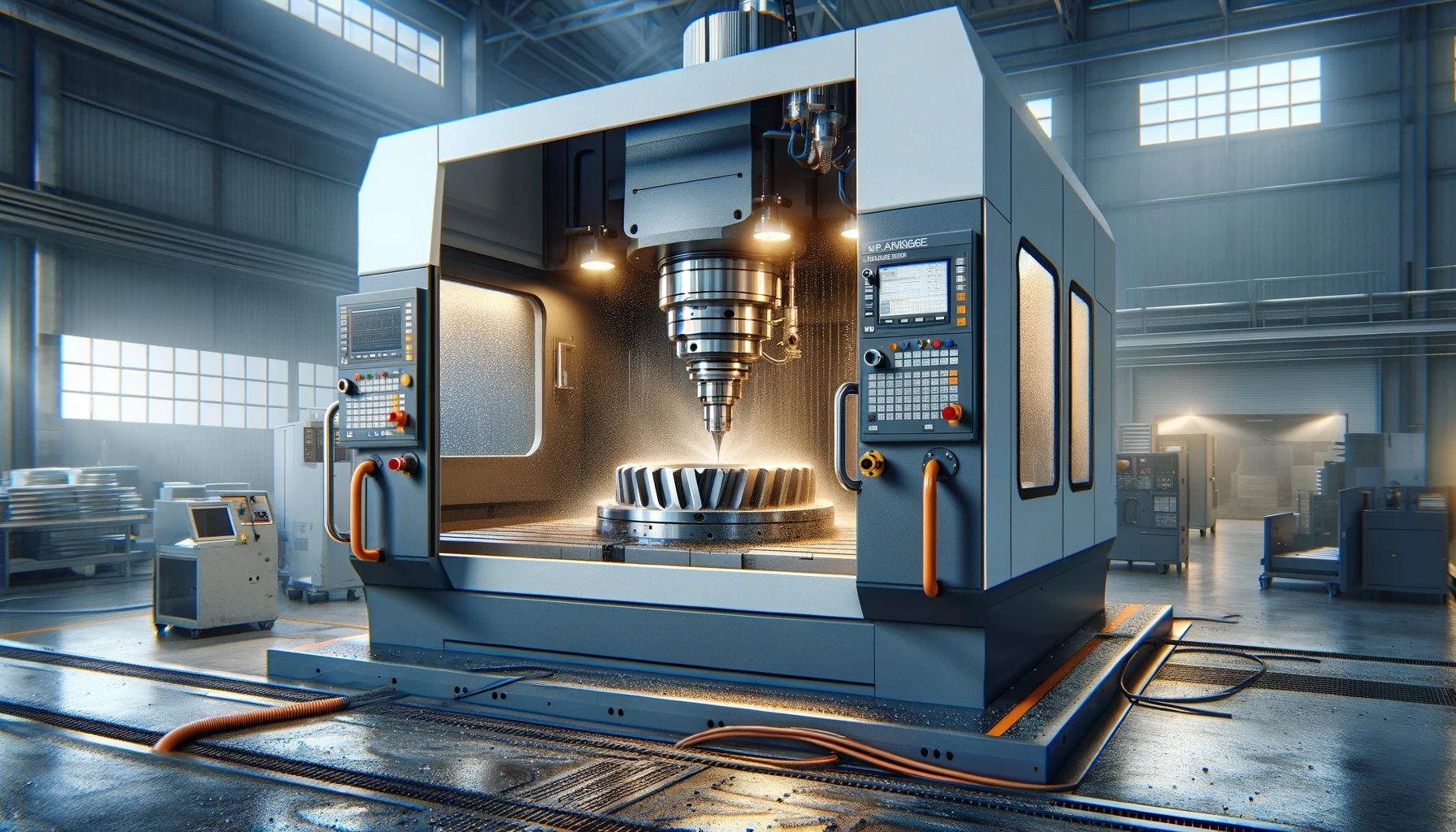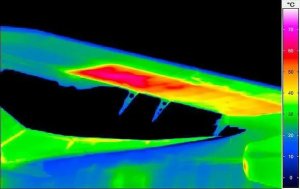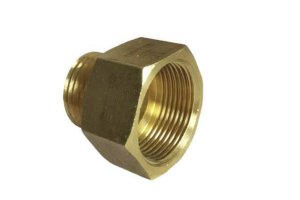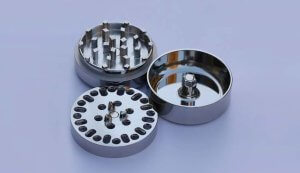What Are the Primary Considerations When Selecting CNC Equipment for Stainless Steel?
When selecting CNC equipment for stainless steel flanges, it’s imperative to consider the unique properties of stainless steel that affect machining, such as its hardness and tendency to work harden. Equipment needs to have sufficient rigidity and power to handle these challenges without compromising the integrity of the flange.
China Online CNC Machining Services – Want.net
- High-Torque Spindles: Essential for handling the increased resistance from stainless steel.
- Rigid Machine Construction: Minimizes vibrations during heavy cutting, crucial for maintaining precision.
- Advanced Cooling Systems: Necessary to manage heat buildup and prevent deformation of the workpiece.
Data Table: Required CNC Machine Features for Different Stainless Steel Grades
| Steel Grade | Required Spindle Torque (Nm) | Minimum Machine Rigidity (Kn/m) | Cooling Requirement |
|---|---|---|---|
| 304 | 250 | 50 | High-pressure coolant |
| 316 | 300 | 55 | High-pressure coolant |
| 410 | 350 | 60 | Cryogenic cooling |
How Does Material Hardness Impact CNC Machine Selection?
Selecting the right CNC machine for machining stainless steel flanges involves understanding the hardness of the material, as it directly impacts tool wear and machining speeds. The harder the material, the more robust and technically capable the CNC machine needs to be to maintain accuracy and surface finish.
- Tool Material Choice: Importance of selecting the correct tool material to combat the wear and tear due to stainless steel’s hardness.
- Program Optimization: Adjusting cutting speeds and feed rates to minimize the chances of tool failure and work hardening.
Case Study: Matching Machine Capabilities with Material Hardness
An in-depth look at a manufacturing scenario where switching to a more capable CNC machine allowed a company to increase its output of 316-grade stainless steel flanges by 30% while reducing tooling costs by 20%.
What Are the Benefits of Multi-Axis CNC Machines for Flange Manufacturing?
Multi-axis CNC machines provide significant advantages in manufacturing complex flanges by allowing multiple machining processes to be performed with a single setup. This reduces handling time, increases accuracy, and can dramatically improve the throughput.
- Complexity Handling: Ability to produce complex shapes and features without additional setups.
- Reduced Setup Time: Decreases overall manufacturing time and increases workflow efficiency.
Graphical Analysis: Efficiency Comparison Between 3-Axis vs. 5-Axis CNC Machines
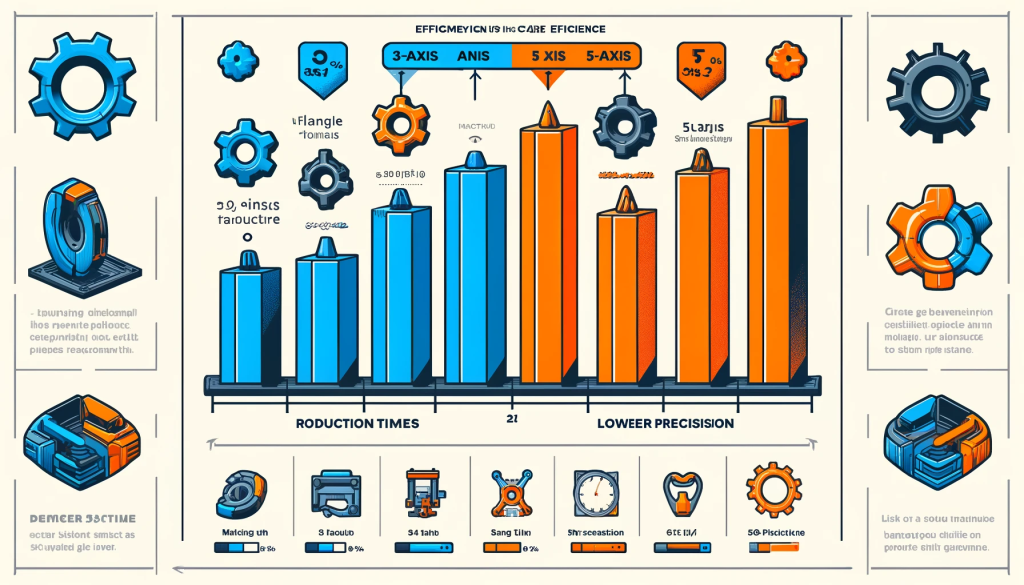
A detailed graphical representation showing the reduction in production time and improvements in output quality when using 5-axis machines for complex flange designs.
How Crucial is Machine Calibration for Precision in Flange Machining?
Regular calibration of CNC equipment is non-negotiable when it comes to manufacturing high-precision stainless steel flanges. Calibration ensures that the CNC machine operates as intended, maintaining the tight tolerances required for high-quality flanges.
- Frequency of Calibration: Discussing how often machines should be calibrated based on usage and material type.
- Calibration Techniques: Delving into various techniques such as laser interferometry and ballbar testing to ensure machine accuracy.
Case Study: Calibration Impact on High-Precision Projects
Detailing how a scheduled calibration regimen helped a naval equipment manufacturer improve their product rejection rate from 15% to less than 1%, emphasizing the economic and reputational benefits of rigorous calibration.
What Are the Latest Advances in CNC Technology for Flange Machining?
Now, the use of cutting-edge technologies, including automation, real-time adjustment systems and predictive maintenance technology, is setting new standards for precision and efficiency in CNC machining of stainless steel flanges.
- Automation and Robotics: Integrating robotics to automate repetitive tasks and increase production volumes.
- Predictive Maintenance: Utilizing machine learning algorithms to predict tool wear and machine failure before they occur, thus reducing downtime and maintenance costs.
Innovation Spotlight: Smart CNC Systems
Exploring case studies of advanced CNC systems that use artificial intelligence to optimize cutting conditions in real-time, adjusting parameters automatically to improve tool life and part quality.
How to Assess the Cost-Effectiveness of CNC Equipment for Flange Production?
Investing in the right CNC machinery is not only about matching capabilities with production needs but also about understanding the total cost of ownership, which includes acquisition, operation, maintenance, and even the end-of-life disposal or resale value.
- Total Cost of Ownership: Detailing how initial purchase price, maintenance costs, energy consumption, and downtime for repairs contribute to the overall cost.
- ROI Analysis: Methods for calculating the return on investment, considering improved efficiency, reduced waste, and higher-quality output.
Data Table: Detailed ROI Analysis for CNC Equipment
| CNC Model | Initial Cost | Annual Maintenance | Energy Costs/Year | Expected Life (Years) | Resale Value | Annual ROI |
|---|---|---|---|---|---|---|
| Model A | $500,000 | $20,000 | $5,000 | 10 | $50,000 | 8% |
| Model B | $750,000 | $25,000 | $7,000 | 12 | $90,000 | 10% |
Costs can be effectively reduced through efficient use, timely maintenance and the use of technology to extend the service life of equipment.
What Training is Required for Operators to Maximize CNC Machine Efficiency?
Ensuring that CNC machine operators are well-trained is crucial for maximizing the efficiency and longevity of the machinery, especially when dealing with complex components like stainless steel flanges. Effective operator training can significantly impact productivity, reduce downtime, and enhance product quality.
Initial Training: When new operators are hired or new machines are introduced, comprehensive initial training is crucial. This training should cover:
- Machine Operation: Instructions on basic machine operations, including start-up, running, and shutdown procedures.
- CNC Programming: Operators should understand how to read and modify CNC programs. This includes training on specific software used for CNC programming.
- Handling Materials: Specialized training on handling different materials, particularly focusing on stainless steel to understand its properties and machining challenges.
Advanced Skill Development: Beyond initial training, operators should receive advanced training that includes:
- Precision Machining Techniques: Detailed instructions on setting up and operating CNC machines to produce high-precision flanges. This might include training on specific post-processing techniques such as polishing and deburring.
- Tooling Expertise: Knowledge of selecting, setting, and maintaining tools, which is vital for working with hard materials like stainless steel.
Maintenance Training: Proper maintenance ensures that CNC machines operate efficiently and have a longer lifespan. Training should include:
- Routine Maintenance Skills: Operators need to perform daily checks and regular maintenance tasks to prevent breakdowns and maintain accuracy.
- Troubleshooting Minor Issues: Training operators to diagnose and fix common issues that don’t require a technician can significantly reduce machine downtime.
Benefits of Well-Trained CNC Operators
- Increased Productivity: Well-trained operators can maximize machine uptime, reduce cycle times, and increase output without compromising quality.
- Reduced Operational Costs: Efficient handling of machines and proactive maintenance reduce costly repairs and extend the machinery’s operational life.
- Enhanced Product Quality: Skilled operators produce fewer errors, resulting in higher quality products and lower rejection rates.
Training Investment ROI Table
| Training Type | Cost | Productivity Increase | Downtime Reduction | ROI |
|---|---|---|---|---|
| Initial | $1,200 | 20% | 15% | 300% |
| Advanced | $1,500 | 30% | 25% | 400% |
| Maintenance | $800 | 10% | 30% | 350% |
Conclusion and Strategic Recommendations
To conclude, selecting the right CNC machining equipment for manufacturing stainless steel flanges is a multifaceted decision that involves understanding technical specifications, assessing total cost implications, ensuring quality through rigorous calibration, and empowering operators with the necessary training.
Strategic Recommendations:
- Perform a Comprehensive Needs Analysis: Before investing in new equipment, conduct a thorough analysis of production needs, material requirements, and expected production volumes.
- Evaluate Long-Term Benefits vs. Short-Term Costs: Consider how the equipment will serve your needs over its entire lifecycle rather than just the immediate cost or benefits.
- Foster a Culture of Continuous Improvement: Encourage ongoing training and development to keep skills sharp and take full advantage of advanced CNC capabilities.
This detailed guide aims to provide manufacturers with the insights needed to make informed decisions that will enhance their operational efficiency, improve product quality, and optimize cost management in the competitive field of CNC machining for stainless steel flanges.
Other Articles You Might Enjoy
- What Material Properties Need to Be Considered When CNC Machining Stainless Steel Flanges?
The CNC machining of stainless steel flanges requires a profound understanding of the material's properties to ensure high-quality, precision outcomes. This article delves into the critical material properties that impact…
- Precision CNC Machining of Stainless Steel: Innovations and Best Practices in Aerospace Machining
Introduction: Precision CNC Machining and the Use of Stainless Steel Precision Computer Numerical Control (CNC) machining, a vital technology within the manufacturing industry, uses pre-programmed software to guide machinery towards…
- Stainless Steel vs. Aluminum in CNC Machining: Pros and Cons
CNC Machining: The Role of Stainless Steel and Aluminum Computer Numerical Control (CNC) machining is a groundbreaking method in manufacturing that involves precise computer commands to manipulate and control tools…
- CNC Machining Material Showdown: 304 vs. 316 Stainless Steel
CNC Machining: An Overview And Importance of Material Selection Computer Numerical Control (CNC) machining is a manufacturing process that uses pre-programmed computer software to dictate the movement of factory tools…
- Stainless Steel vs. Aluminum in CNC Machining: Pros and Cons
CNC Machining and the Importance of Material Selection CNC machining, a pivotal manufacturing process in numerous industries, uses pre-programmed computer software to dictate the movement of factory tools and machinery.…
- CNC Machining in the Watchmaking Industry: Stainless Steel vs. Titanium Cases
CNC Machining and its Role in the Watchmaking Industry In the world of horology, CNC machining has proven itself to be an invaluable tool. This modern method allows custom parts…


